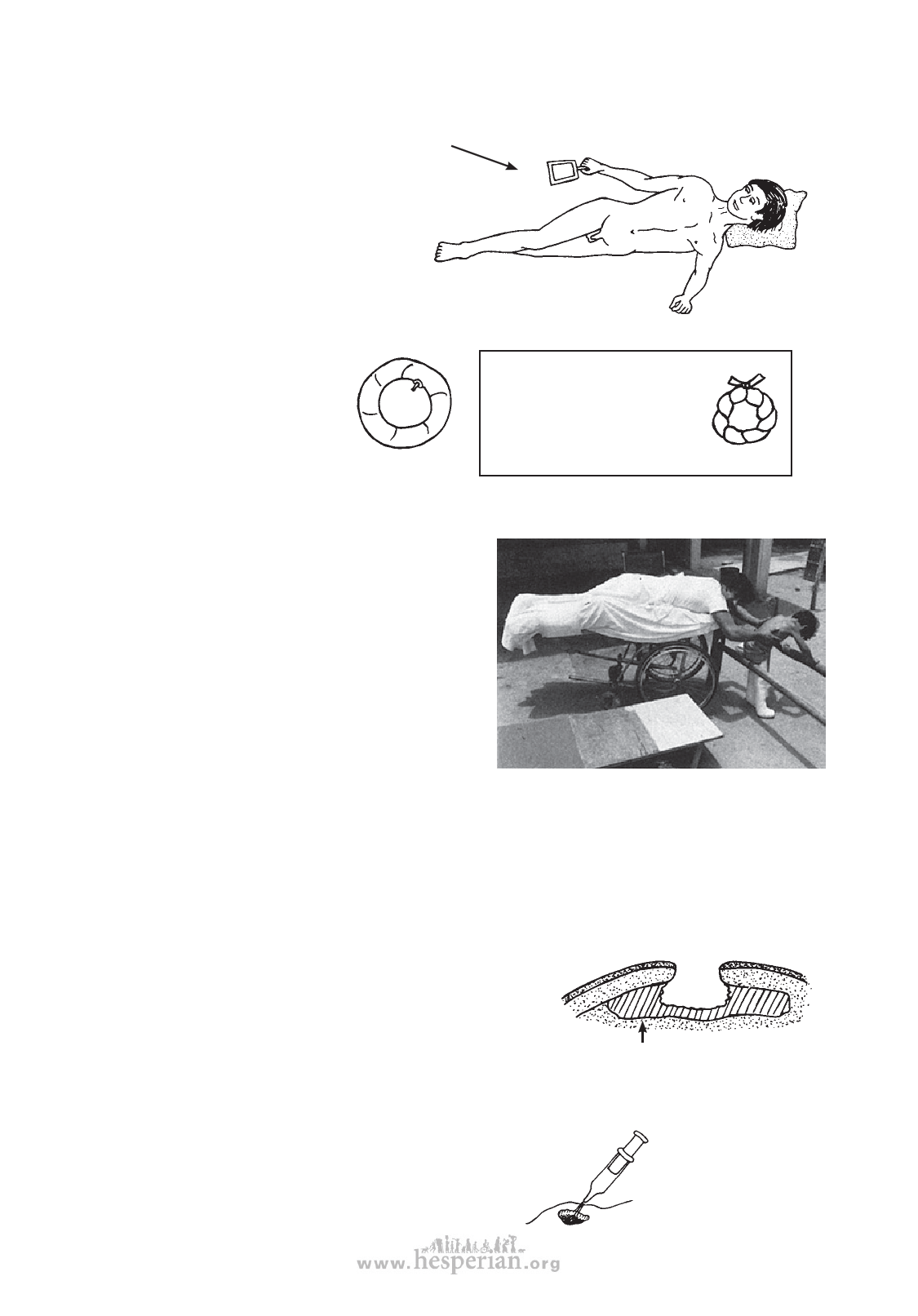
PRESSURE SORES
TREATMENT OF PRESSURE SORES
Watch for the first signs of a pressure sore by examining the whole body every day.
Teach the child to do this using a mirror.
If early signs of a sore appear
(redness, darkness, swelling, or open
skin), change body positions and use
padding to protect that area from
pressure.
For larger areas (like the bones near the
base of the spine), you can try using a
small (motor scooter) inner
tube to keep weight off
the sore area. Put a towel
over the tube to soak up
sweat. (Sweaty skin against
the rubber can also cause
sores.)
WARNING: For small areas such
as heels, never use a ring or
‘donut’ of cloth to keep weight
off the sore. This can cut off
blood supply to the skin inside
the ring and make the sore worse.
NO!
IF A PRESSURE SORE HAS ALREADY FORMED:
• Keep pressure off the sore area
completely and continuously.
• Keep the area completely clean.
Wash it gently with clean or
boiled water twice a day. Do not
use alcohol, iodine, merthiolate,
or other strong antiseptics.
• Eat well. If lots of liquid comes
out of the sore, a lot of protein
and iron are lost with it. These
must be replaced for quicker healing.
Also take iron pills if signs of
anemia are present. Eat foods rich
in protein: beans, lentils, eggs,
meat, fish, milk products.
This paraplegic young man has a large pressure
sore on his butt. Until it heals, he must not sit.
Village rehabilitation workers made this wheel
lying cart for him to move about on. Here he helps
a boy learn to walk. (Photo, John Fago.)
• Do not rub or massage areas where pressure sores might be forming. This could
tear weakened flesh and make the sore inside bigger.
IF A SORE IS DEEP AND HAS A LOT OF DEAD FLESH:
• Clean the sore 3 times a day.
• Each time, try to scrape and pick out more
of the dead rotten flesh. Often, you will
find the sore is much bigger inside than
you first thought. It may go deep under
the edges of the skin. Little by little
remove the dead flesh until you come to
healthy red flesh (or bone!).
• Each time after cleaning out the dead flesh,
wash the sore out well with soapy water.
Use liquid surgical soap if possible. Then
rinse with clean (boiled and cooled) water.
open
sore
Dead flesh—may be gray, black,
greenish, or yellowish. It may
have a bad smell if infected.
A large plastic or
glass syringe works
well for washing out
the sore. Wash the
syringe well with
soap and water after
each use.
201
disabled village children